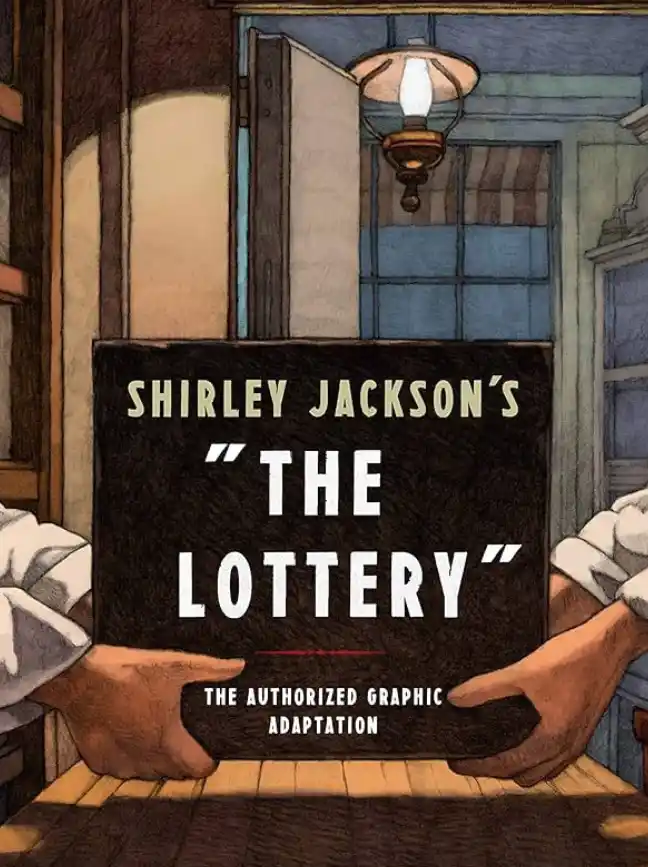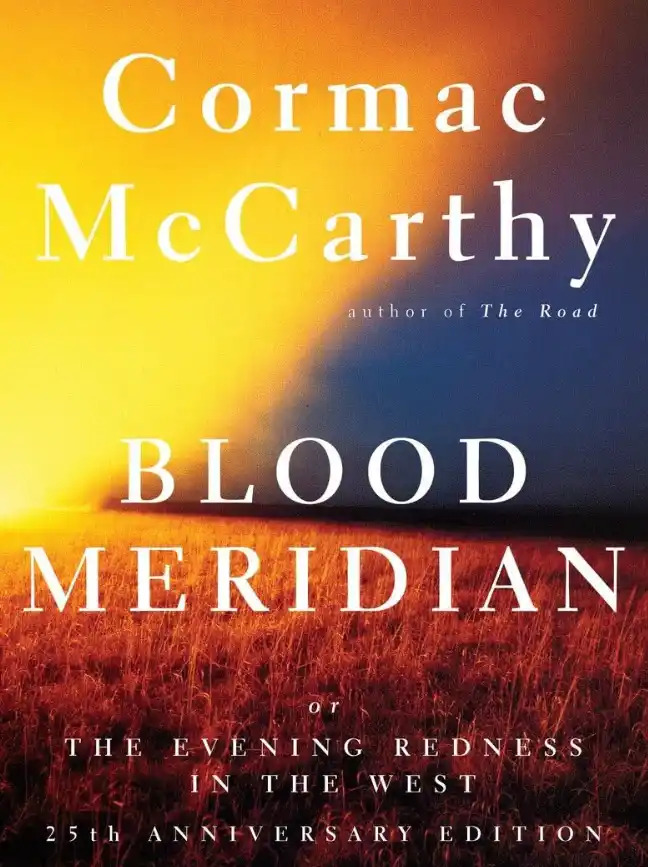THE IDEOLOGY OF COMPETITION
CREATIVE MONOPOLY means new products that benefit everybody and sustainable profits for the creator. Competition means no profits for anybody, no meaningful differentiation, and a struggle for survival. So why do people believe that competition is healthy? The answer is that competition is not just an economic concept or a simple inconvenience that individuals and companies must deal with in the marketplace. More than anything else, competition is an ideology—the ideology
—that pervades our society and distorts our thinking. We preach competition, internalize its necessity, and enact its commandments; and as a result, we trap ourselves within it—even though the more we compete, the less we gain.
This is a simple truth, but we’ve all been trained to ignore it. Our educational system both drives and reflects our obsession with competition. Grades themselves allow precise measurement of each student’s competitiveness; pupils with the highest marks receive status and credentials. We teach every young person the same subjects in mostly the same ways, irrespective of individual talents and preferences. Students who don’t learn best by sitting still at a desk are made to feel somehow inferior, while children who excel on conventional measures like tests and assignments end up defining their identities in terms of this weirdly contrived academic parallel reality.
And it gets worse as students ascend to higher levels of the tournament. Elite students climb confidently until they reach a level of competition sufficiently intense to beat their dreams out of them. Higher education is the place where people who had big plans in high school get stuck in fierce rivalries with equally smart peers over conventional careers like management consulting and investment banking. For the privilege of being turned into conformists, students (or their families) pay hundreds of thousands of dollars in skyrocketing tuition that continues to outpace inflation. Why are we doing this to ourselves?
I wish I had asked myself when I was younger. My path was so tracked that in my 8th-grade yearbook, one of my friends predicted—accurately—that four years later I would enter Stanford as a sophomore. And after a conventionally successful undergraduate career, I enrolled at Stanford Law School, where I competed even harder for the standard badges of success.
The highest prize in a law student’s world is unambiguous: out of tens of thousands of graduates each year, only a few dozen get a Supreme Court clerkship. After clerking on a federal appeals court for a year, I was invited to interview for clerkships with Justices Kennedy and Scalia. My meetings with the Justices went well. I was so close to winning this last competition. If only I got the clerkship, I thought, I would be set for life. But I didn’t. At the time, I was devastated.
In 2004, after I had built and sold PayPal, I ran into an old friend from law school who had helped me prepare my failed clerkship applications. We hadn’t spoken in nearly a decade. His first question wasn’t “How are you doing?” or “Can you believe it’s been so long?” Instead, he grinned and asked: “So, Peter, aren’t you glad you didn’t get that clerkship?” With the benefit of hindsight, we both knew that winning that ultimate competition would have changed my life for the worse. Had I actually clerked on the Supreme Court, I probably would have spent my entire career taking depositions or drafting other people’s business deals instead of creating anything new. It’s hard to say how much would be different, but the opportunity costs were enormous. All Rhodes Scholars had a great future in their past.
Professors downplay the cutthroat culture of academia, but managers never tire of comparing business to war. MBA students carry around copies of Clausewitz and Sun Tzu. War metaphors invade our everyday business language: we use headhunters to build up a sales force that will enable us to take a captive market and make a killing. But really it’s competition, not business, that is like war: allegedly necessary, supposedly valiant, but ultimately destructive.
Why do people compete with each other? Marx and Shakespeare provide two models for understanding almost every kind of conflict.
According to Marx, people fight because they are different. The proletariat fights the bourgeoisie because they have completely different ideas and goals (generated, for Marx, by their very different material circumstances). The greater the differences, the greater the conflict.
To Shakespeare, by contrast, all combatants look more or less alike. It’s not at all clear why they should be fighting, since they have nothing to fight about. Consider the opening line from Romeo and Juliet: “Two households, both alike in dignity.” The two houses are alike, yet they hate each other. They grow even more similar as the feud escalates. Eventually, they lose sight of why they started fighting in the first place.
In the world of business, at least, Shakespeare proves the superior guide. Inside a firm, people become obsessed with their competitors for career advancement. Then the firms themselves become obsessed with their competitors in the marketplace. Amid all the human drama, people lose sight of what matters and focus on their rivals instead.
Let’s test the Shakespearean model in the real world. Imagine a production called Gates and Schmidt, based on Romeo and Juliet. Montague is Microsoft. Capulet is Google. Two great families, run by alpha nerds, sure to clash on account of their sameness.
As with all good tragedy, the conflict seems inevitable only in retrospect. In fact it was entirely avoidable. These families came from very different places. The House of Montague built operating systems and office applications. The House of Capulet wrote a search engine. What was there to fight about?
Lots, apparently. As a startup, each clan had been content to leave the other alone and prosper independently. But as they grew, they began to focus on each other. Montagues obsessed about Capulets obsessed about Montagues. The result? Windows vs. Chrome OS, Bing vs. Google Search, Explorer vs. Chrome, Office vs. Docs, and Surface vs. Nexus.
Just as war cost the Montagues and Capulets their children, it cost Microsoft and Google their dominance: Apple came along and overtook them all. In January 2013, Apple’s market capitalization was $500 billion, while Google and Microsoft combined were worth $467 billion. Just three years before, Microsoft and Google were each more valuable than Apple. War is costly business.
Rivalry causes us to overemphasize old opportunities and slavishly copy what has worked in the past. Consider the recent proliferation of mobile credit card readers. In October 2010, a startup called Square released a small, white, square-shaped product that let anyone with an iPhone swipe and accept credit cards. It was the first good payment processing solution for mobile handsets. Imitators promptly sprang into action. A Canadian company called NetSecure launched its own card reader in a half- moon shape. Intuit brought a cylindrical reader to the geometric battle. In March 2012, eBay’s PayPal unit launched its own copycat card reader. It was shaped like a triangle—a clear jab at Square, as three sides are simpler than four. One gets the sense that this Shakespearean saga won’t end until the apes run out of shapes.
The hazards of imitative competition may partially explain why individuals with an Asperger’s-like social ineptitude seem to be at an advantage in Silicon Valley today. If you’re less sensitive to social cues, you’re less likely to do the same things as everyone else around you. If you’re interested in making things or programming
computers, you’ll be less afraid to pursue those activities single-mindedly and thereby become incredibly good at them. Then when you apply your skills, you’re a little less likely than others to give up your own convictions: this can save you from getting caught up in crowds competing for obvious prizes.
Competition can make people hallucinate opportunities where none exist. The crazy ’90s version of this was the fierce battle for the online pet store market. It was Pets.com vs. PetStore.com vs. Petopia.com vs. what seemed like dozens of others. Each company was obsessed with defeating its rivals, precisely because there were no substantive differences to focus on. Amid all the tactical questions—Who could price chewy dog toys most aggressively? Who could create the best Super Bowl ads?— these companies totally lost sight of the wider question of whether the online pet supply market was the right space to be in. Winning is better than losing, but everybody loses when the war isn’t one worth fighting. When Pets.com folded after the dot-com crash, $300 million of investment capital disappeared with it.
Other times, rivalry is just weird and distracting. Consider the Shakespearean conflict between Larry Ellison, co-founder and CEO of Oracle, and Tom Siebel, a top salesman at Oracle and Ellison’s protégé before he went on to found Siebel Systems in 1993. Ellison was livid at what he thought was Siebel’s betrayal. Siebel hated being in the shadow of his former boss. The two men were basically identical— hard-charging Chicagoans who loved to sell and hated to lose—so their hatred ran deep. Ellison and Siebel spent the second half of the ’90s trying to sabotage each other. At one point, Ellison sent truckloads of ice cream sandwiches to Siebel’s headquarters to try to convince Siebel employees to jump ship. The copy on the wrappers? “Summer is near. Oracle is here. To brighten your day and your career.”
Strangely, Oracle intentionally accumulated enemies. Ellison’s theory was that it’s always good to have an enemy, so long as it was large enough to appear threatening (and thus motivational to employees) but not so large as to actually threaten the company. So Ellison was probably thrilled when in 1996 a small database company called Informix put up a billboard near Oracle’s Redwood Shores headquarters that read: CAUTION: DINOSAUR CROSSING. Another Informix billboard on northbound Highway 101 read: YOU’VE JUST PASSED REDWOOD SHORES. SO DID WE.
Oracle shot back with a billboard that implied that Informix’s software was slower than snails. Then Informix CEO Phil White decided to make things personal. When White learned that Larry Ellison enjoyed Japanese samurai culture, he commissioned a new billboard depicting the Oracle logo along with a broken samurai sword. The ad wasn’t even really aimed at Oracle as an entity, let alone the consuming public; it was a personal attack on Ellison. But perhaps White spent a
little too much time worrying about the competition: while he was busy creating billboards, Informix imploded in a massive accounting scandal and White soon found himself in federal prison for securities fraud.
If you can’t beat a rival, it may be better to merge. I started Confinity with my co- founder Max Levchin in 1998. When we released the PayPal product in late 1999, Elon Musk’s X.com was right on our heels: our companies’ offices were four blocks apart on University Avenue in Palo Alto, and X’s product mirrored ours feature-for- feature. By late 1999, we were in all-out war. Many of us at PayPal logged 100-hour workweeks. No doubt that was counterproductive, but the focus wasn’t on objective productivity; the focus was defeating X.com. One of our engineers actually designed a bomb for this purpose; when he presented the schematic at a team meeting, calmer heads prevailed and the proposal was attributed to extreme sleep deprivation.
But in February 2000, Elon and I were more scared about the rapidly inflating tech bubble than we were about each other: a financial crash would ruin us both before we could finish our fight. So in early March we met on neutral ground—a café almost exactly equidistant to our offices—and negotiated a 50-50 merger. De- escalating the rivalry post-merger wasn’t easy, but as far as problems go, it was a good one to have. As a unified team, we were able to ride out the dot-com crash and then build a successful business.
Sometimes you do have to fight. Where that’s true, you should fight and win. There is no middle ground: either don’t throw any punches, or strike hard and end it quickly.
This advice can be hard to follow because pride and honor can get in the way.
Exposing what is mortal and unsure
To all that fortune, death, and danger dare, Even for an eggshell. Rightly to be great
Is not to stir without great argument, But greatly to find quarrel in a straw When honor’s at the stake.
For Hamlet, greatness means willingness to fight for reasons as thin as an eggshell: anyone would fight for things that matter; true heroes take their personal honor so seriously they will fight for things that don’t matter. This twisted logic is part of human nature, but it’s disastrous in business. If you can recognize competition as a destructive force instead of a sign of value, you’re already more sane
than most. The next chapter is about how to use a clear head to build a monopoly business.
E
SCAPING COMPETITION will give you a monopoly, but even a monopoly is only a great business if it can endure in the future. Compare the value of the New York Times Company with Twitter. Each employs a few thousand people, and each gives millions of people a way to get news. But when Twitter went public in 2013, it was valued at $24 billion—more than 12 times the Times’s market capitalization— even though the Times earned $133 million in 2012 while Twitter lost money. What
explains the huge premium for Twitter?
The answer is cash flow. This sounds bizarre at first, since the Times was profitable while Twitter wasn’t. But a great business is defined by its ability to generate cash flows in the future. Investors expect Twitter will be able to capture monopoly profits over the next decade, while newspapers’ monopoly days are over.
Simply stated, the value of a business today is the sum of all the money it will make in the future. (To properly value a business, you also have to discount those future cash flows to their present worth, since a given amount of money today is worth more than the same amount in the future.)
Comparing discounted cash flows shows the difference between low-growth businesses and high-growth startups at its starkest. Most of the value of low-growth businesses is in the near term. An Old Economy business (like a newspaper) might hold its value if it can maintain its current cash flows for five or six years. However, any firm with close substitutes will see its profits competed away. Nightclubs or restaurants are extreme examples: successful ones might collect healthy amounts today, but their cash flows will probably dwindle over the next few years when customers move on to newer and trendier alternatives.
Technology companies follow the opposite trajectory. They often lose money for
the first few years: it takes time to build valuable things, and that means delayed revenue. Most of a tech company’s value will come at least 10 to 15 years in the future.
In March 2001, PayPal had yet to make a profit but our revenues were growing 100% year-over-year. When I projected our future cash flows, I found that 75% of the company’s present value would come from profits generated in 2011 and beyond
—hard to believe for a company that had been in business for only 27 months. But even that turned out to be an underestimation. Today, PayPal continues to grow at about 15% annually, and the discount rate is lower than a decade ago. It now appears that most of the company’s value will come from 2020 and beyond.
LinkedIn is another good example of a company whose value exists in the far future. As of early 2014, its market capitalization was $24.5 billion—very high for a company with less than $1 billion in revenue and only $21.6 million in net income for 2012. You might look at these numbers and conclude that investors have gone insane. But this valuation makes sense when you consider LinkedIn’s projected future cash flows.
The overwhelming importance of future profits is counterintuitive even in Silicon Valley. For a company to be valuable it must grow and endure, but many entrepreneurs focus only on short-term growth. They have an excuse: growth is easy to measure, but durability isn’t. Those who succumb to measurement mania obsess about weekly active user statistics, monthly revenue targets, and quarterly earnings reports. However, you can hit those numbers and still overlook deeper, harder-to- measure problems that threaten the durability of your business.
For example, rapid short-term growth at both Zynga and Groupon distracted managers and investors from long-term challenges. Zynga scored early wins with games like Farmville and claimed to have a “psychometric engine” to rigorously gauge the appeal of new releases. But they ended up with the same problem as every Hollywood studio: how can you reliably produce a constant stream of popular entertainment for a fickle audience? (Nobody knows.) Groupon posted fast growth as hundreds of thousands of local businesses tried their product. But persuading those businesses to become repeat customers was harder than they thought.
If you focus on near-term growth above all else, you miss the most important question you should be asking: will this business still be around a decade from now? Numbers alone won’t tell you the answer; instead you must think critically about the qualitative characteristics of your business.
What does a company with large cash flows far into the future look like? Every monopoly is unique, but they usually share some combination of the following characteristics: proprietary technology, network effects, economies of scale, and branding.
This isn’t a list of boxes to check as you build your business—there’s no shortcut to monopoly. However, analyzing your business according to these characteristics can help you think about how to make it durable.
-
Proprietary Technology
Proprietary technology is the most substantive advantage a company can have because it makes your product difficult or impossible to replicate. Google’s search algorithms, for example, return results better than anyone else’s. Proprietary technologies for extremely short page load times and highly accurate query autocompletion add to the core search product’s robustness and defensibility. It would be very hard for anyone to do to Google what Google did to all the other search engine companies in the early 2000s.
As a good rule of thumb, proprietary technology must be at least 10 times better than its closest substitute in some important dimension to lead to a real monopolistic advantage. Anything less than an order of magnitude better will probably be perceived as a marginal improvement and will be hard to sell, especially in an already crowded market.
The clearest way to make a 10x improvement is to invent something completely new. If you build something valuable where there was nothing before, the increase in value is theoretically infinite. A drug to safely eliminate the need for sleep, or a cure for baldness, for example, would certainly support a monopoly business.
Or you can radically improve an existing solution: once you’re 10x better, you escape competition. PayPal, for instance, made buying and selling on eBay at least 10 times better. Instead of mailing a check that would take 7 to 10 days to arrive, PayPal let buyers pay as soon as an auction ended. Sellers received their proceeds right away, and unlike with a check, they knew the funds were good.
Amazon made its first 10x improvement in a particularly visible way: they offered at least 10 times as many books as any other bookstore. When it launched in 1995, Amazon could claim to be “Earth’s largest bookstore” because, unlike a retail bookstore that might stock 100,000 books, Amazon didn’t need to physically store any inventory—it simply requested the title from its supplier whenever a customer made an order. This quantum improvement was so effective that a very unhappy Barnes & Noble filed a lawsuit three days before Amazon’s IPO, claiming that Amazon was unfairly calling itself a “bookstore” when really it was a “book broker.” You can also make a 10x improvement through superior integrated design. Before 2010, tablet computing was so poor that for all practical purposes the market didn’t even exist. “Microsoft Windows XP Tablet PC Edition” products first shipped in 2002, and Nokia released its own “Internet Tablet” in 2005, but they were a pain to use. Then Apple released the iPad. Design improvements are hard to measure, but it seems clear that Apple improved on anything that had come before by at least an
order of magnitude: tablets went from unusable to useful.
-
Network effects make a product more useful as more people use it. For example, if all your friends are on Facebook, it makes sense for you to join Facebook, too. Unilaterally choosing a different social network would only make you an eccentric.
Network effects can be powerful, but you’ll never reap them unless your product is valuable to its very first users when the network is necessarily small. For example, in 1960 a quixotic company called Xanadu set out to build a two-way communication network between all computers—a sort of early, synchronous version of the World Wide Web. After more than three decades of futile effort, Xanadu folded just as the web was becoming commonplace. Their technology probably would have worked at scale, but it could have worked only at scale: it required every computer to join the network at the same time, and that was never going to happen.
Paradoxically, then, network effects businesses must start with especially small markets. Facebook started with just Harvard students—Mark Zuckerberg’s first product was designed to get all his classmates signed up, not to attract all people of Earth. This is why successful network businesses rarely get started by MBA types: the initial markets are so small that they often don’t even appear to be business opportunities at all.
-
A monopoly business gets stronger as it gets bigger: the fixed costs of creating a product (engineering, management, office space) can be spread out over ever greater quantities of sales. Software startups can enjoy especially dramatic economies of scale because the marginal cost of producing another copy of the product is close to zero.
Many businesses gain only limited advantages as they grow to large scale. Service businesses especially are difficult to make monopolies. If you own a yoga studio, for example, you’ll only be able to serve a certain number of customers. You can hire more instructors and expand to more locations, but your margins will remain fairly low and you’ll never reach a point where a core group of talented people can provide something of value to millions of separate clients, as software engineers are able to do.
A good startup should have the potential for great scale built into its first design. Twitter already has more than 250 million users today. It doesn’t need to add too many customized features in order to acquire more, and there’s no inherent reason why it should ever stop growing.
A company has a monopoly on its own brand by definition, so creating a strong brand is a powerful way to claim a monopoly. Today’s strongest tech brand is Apple: the attractive looks and carefully chosen materials of products like the iPhone and MacBook, the Apple Stores’ sleek minimalist design and close control over the consumer experience, the omnipresent advertising campaigns, the price positioning as a maker of premium goods, and the lingering nimbus of Steve Jobs’s personal charisma all contribute to a perception that Apple offers products so good as to constitute a category of their own.
Many have tried to learn from Apple’s success: paid advertising, branded stores, luxurious materials, playful keynote speeches, high prices, and even minimalist design are all susceptible to imitation. But these techniques for polishing the surface don’t work without a strong underlying substance. Apple has a complex suite of proprietary technologies, both in hardware (like superior touchscreen materials) and software (like touchscreen interfaces purpose-designed for specific materials). It manufactures products at a scale large enough to dominate pricing for the materials it buys. And it enjoys strong network effects from its content ecosystem: thousands of developers write software for Apple devices because that’s where hundreds of
millions of users are, and those users stay on the platform because it’s where the apps are. These other monopolistic advantages are less obvious than Apple’s sparkling brand, but they are the fundamentals that let the branding effectively reinforce Apple’s monopoly.
Beginning with brand rather than substance is dangerous. Ever since Marissa Mayer became CEO of Yahoo! in mid-2012, she has worked to revive the once- popular internet giant by making it cool again. In a single tweet, Yahoo! summarized Mayer’s plan as a chain reaction of “people then products then traffic then revenue.” The people are supposed to come for the coolness: Yahoo! demonstrated design awareness by overhauling its logo, it asserted youthful relevance by acquiring hot startups like Tumblr, and it has gained media attention for Mayer’s own star power. But the big question is what products Yahoo! will actually create. When Steve Jobs returned to Apple, he didn’t just make Apple a cool place to work; he slashed product lines to focus on the handful of opportunities for 10x improvements. No technology company can be built on branding alone.
Brand, scale, network effects, and technology in some combination define a monopoly; but to get them to work, you need to choose your market carefully and expand deliberately.
Start Small and Monopolize
Every startup is small at the start. Every monopoly dominates a large share of its market. Therefore, every startup should start with a very small market. Always err on the side of starting too small. The reason is simple: it’s easier to dominate a small market than a large one. If you think your initial market might be too big, it almost certainly is.
Small doesn’t mean nonexistent. We made this mistake early on at PayPal. Our first product let people beam money to each other via PalmPilots. It was interesting technology and no one else was doing it. However, the world’s millions of PalmPilot users weren’t concentrated in a particular place, they had little in common, and they used their devices only episodically. Nobody needed our product, so we had no customers.
With that lesson learned, we set our sights on eBay auctions, where we found our first success. In late 1999, eBay had a few thousand high-volume “PowerSellers,” and after only three months of dedicated effort, we were serving 25% of them. It was much easier to reach a few thousand people who really needed our product than to try to compete for the attention of millions of scattered individuals.
The perfect target market for a startup is a small group of particular people concentrated together and served by few or no competitors. Any big market is a bad choice, and a big market already served by competing companies is even worse. This is why it’s always a red flag when entrepreneurs talk about getting 1% of a $100 billion market. In practice, a large market will either lack a good starting point or it will be open to competition, so it’s hard to ever reach that 1%. And even if you do succeed in gaining a small foothold, you’ll have to be satisfied with keeping the lights on: cutthroat competition means your profits will be zero.
Once you create and dominate a niche market, then you should gradually expand into related and slightly broader markets. Amazon shows how it can be done. Jeff Bezos’s founding vision was to dominate all of online retail, but he very deliberately started with books. There were millions of books to catalog, but they all had roughly the same shape, they were easy to ship, and some of the most rarely sold books— those least profitable for any retail store to keep in stock—also drew the most enthusiastic customers. Amazon became the dominant solution for anyone located far from a bookstore or seeking something unusual. Amazon then had two options: expand the number of people who read books, or expand to adjacent markets. They chose the latter, starting with the most similar markets: CDs, videos, and software. Amazon continued to add categories gradually until it had become the world’s general store. The name itself brilliantly encapsulated the company’s scaling strategy. The biodiversity of the Amazon rain forest reflected Amazon’s first goal of cataloging every book in the world, and now it stands for every kind of thing in the world, period.
eBay also started by dominating small niche markets. When it launched its auction marketplace in 1995, it didn’t need the whole world to adopt it at once; the product worked well for intense interest groups, like Beanie Baby obsessives. Once it monopolized the Beanie Baby trade, eBay didn’t jump straight to listing sports cars or industrial surplus: it continued to cater to small-time hobbyists until it became the most reliable marketplace for people trading online no matter what the item.
Sometimes there are hidden obstacles to scaling—a lesson that eBay has learned in recent years. Like all marketplaces, the auction marketplace lent itself to natural monopoly because buyers go where the sellers are and vice versa. But eBay found that the auction model works best for individually distinctive products like coins and stamps. It works less well for commodity products: people don’t want to bid on pencils or Kleenex, so it’s more convenient just to buy them from Amazon. eBay is still a valuable monopoly; it’s just smaller than people in 2004 expected it to be.
Sequencing markets correctly is underrated, and it takes discipline to expand gradually. The most successful companies make the core progression—to first dominate a specific niche and then scale to adjacent markets—a part of their founding narrative.
Don’t Disrupt
Silicon Valley has become obsessed with “disruption.” Originally, “disruption” was a term of art to describe how a firm can use new technology to introduce a low-end product at low prices, improve the product over time, and eventually overtake even the premium products offered by incumbent companies using older technology. This is roughly what happened when the advent of PCs disrupted the market for mainframe computers: at first PCs seemed irrelevant, then they became dominant. Today mobile devices may be doing the same thing to PCs.
However, disruption has recently transmogrified into a self-congratulatory buzzword for anything posing as trendy and new. This seemingly trivial fad matters because it distorts an entrepreneur’s self-understanding in an inherently competitive way. The concept was coined to describe threats to incumbent companies, so startups’ obsession with disruption means they see themselves through older firms’ eyes. If you think of yourself as an insurgent battling dark forces, it’s easy to become unduly fixated on the obstacles in your path. But if you truly want to make something new, the act of creation is far more important than the old industries that might not like what you create. Indeed, if your company can be summed up by its opposition to already existing firms, it can’t be completely new and it’s probably not going to become a monopoly.
Disruption also attracts attention: disruptors are people who look for trouble and find it. Disruptive kids get sent to the principal’s office. Disruptive companies often pick fights they can’t win. Think of Napster: the name itself meant trouble. What kinds of things can one “nap”? Music … Kids … and perhaps not much else. Shawn Fanning and Sean Parker, Napster’s then-teenage founders, credibly threatened to disrupt the powerful music recording industry in 1999. The next year, they made the cover of Time magazine. A year and a half after that, they ended up in bankruptcy court.
PayPal could be seen as disruptive, but we didn’t try to directly challenge any large competitor. It’s true that we took some business away from Visa when we popularized internet payments: you might use PayPal to buy something online instead of using your Visa card to buy it in a store. But since we expanded the market for payments overall, we gave Visa far more business than we took. The overall dynamic was net positive, unlike Napster’s negative-sum struggle with the U.S. recording industry. As you craft a plan to expand to adjacent markets, don’t disrupt: avoid competition as much as possible.
THE LAST WILL BE FIRST
You’ve probably heard about “first mover advantage”: if you’re the first entrant into a market, you can capture significant market share while competitors scramble to get started. But moving first is a tactic, not a goal. What really matters is generating cash flows in the future, so being the first mover doesn’t do you any good if someone else comes along and unseats you. It’s much better to be the last mover—that is, to make the last great development in a specific market and enjoy years or even decades of monopoly profits. The way to do that is to dominate a small niche and scale up from there, toward your ambitious long-term vision. In this one particular at least, business is like chess. Grandmaster José Raúl Capablanca put it well: to succeed, “you must study the endgame before everything else.”








